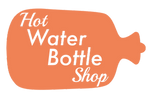Essential Guide To Heat & Cold Therapy
Popular sections:
Purpose of Guide|What Is Heat Therapy?|What Is Cold Therapy?|What Is The Science Behind Heat & Cold Therapy?|When To Use Heat & Cold Therapy
Purpose of Guide
Muscle pain, joint pain, stiffness, and body aches can limit your daily activities. Thankfully, with alternatives to pain medication such as heat and cold therapy, you can find natural pain relief without the risk of habit-forming side effects.
For those in search of non-invasive pain and muscle relief methods, heat and cold therapies provide a natural alternative to pain relief medication. These treatments are non-pharmacological, cost-effective, and can help with sports injuries, joint stiffness, muscle cramps, back pain, and other aches.
In this essential guide, you'll learn about the science behind cold and heat therapy for natural pain relief. You'll also learn how to soothe your aches and pain without side effects.
What is heat therapy?
Among various muscle relief methods, heat therapy stands out for its natural ability to relax the body and alleviate pain. Heat therapy or thermotherapy, is the practice of applying heat to joints, tendons, ligaments, and muscles.
Heat treatment works to relieve stiffness and muscle aches by dilating the blood vessels and encouraging relaxation. It stimulates your self-healing mechanisms by improving the flow of oxygen and nutrients to your tissues and the removing waste products. Heat may also enhance relaxation and relieve stress, taking the edge off your pain.
Hot water bottles, gel packs, microwave wheat bags, and even foot warmers evenly distribute heat to reduce inflammation and improve circulation and flexibility.
However, heat therapy isn't suitable for everyone including those suffering from a new injury or acute inflammation.

What is cold therapy?
In some cases, heat therapy isn't enough to soothe the pain. Joint inflammation, acute injuries, and migraines may respond better to cold therapy. Cold therapy or cryotherapy, provides natural pain relief and involves the use of ice or cold packs to treat pain and inflammation.
Many of our gel packs, eye masks, microwavable wheat bags, and foot warmers double as ice packs when you put them in the freezer. However, always put a cloth between your skin and the cold pack to avoid freezer burns!

What is the science behind heat and cold therapy?
Heat and cold therapy relieve pain and promote healing – but they work in opposite ways1.
Heat therapy increases blood flow by dilating blood vessels2. It relaxes muscle fibres, increasing range of motion and reducing soreness and stiffness. Research shows that applying heat deactivates pain at a molecular level by blocking pain signals to the brain3. Studies have found it helpful for back pain4, sore muscles after exercise5, and joint pain – including temporomandibular pain6.
Cold therapy stimulates vasoconstriction, slowing blood flow and reducing tissue damage. Research shows applying a cold source to the body relieves pain by temporarily slowing nerve signals and increasing pain tolerance7. It's useful for joint inflammation, acute injuries, and pain following intense exercise8.
You can also alternate hot and cold therapy to stimulate circulation, stop inflammation, and numb pain. This is known as contrast therapy.
Both heat and cold therapies offer a unique alternative to pain medication, working in harmony with the body's natural processes.
When to use heat and cold therapy to relieve pain?
Let's explore the many benefits of heat therapy by understanding the problems it may alleviate.

Arthritis and joint pain
Joint pain and inflammation respond well to both hot and cold therapies. Our hot and cold gel packs can be heated or frozen. We also sell adjustable aromatherapy packs with flexible gel beads that mould to your joints.
Heat therapy: Place the gel pack in the microwave for 1-3 minutes before strapping it to your knee or elbow for 20-30 minutes. You can reapply this several times per day.
Cold therapy: Place the gel pack in the freezer for 1-2 hours, then strap it to your painful joint for 15 minutes at a time. Place a cloth on your skin before using the cold pack to avoid freezer burn. Take a two-hour break before applying cold therapy again.
Backache and neck ache
Heat therapy for back pain and neck aches works by relieving muscular knots and improving flexibility. Hot water bottles, microwavable gel packs, body warmers, and even microwave soft toys are easy to heat and apply to achy muscles.
We also have neck warmers that are effective for wearing across your shoulders to relieve neck and shoulder pain. Place it in the microwave for 1-3 minutes. Let it cool for 30 seconds before holding it against your back, neck, or painful muscle for 20-30 minutes. It's best to do this while lying down and relaxing.
Heat therapy for back pain works well in conjunction with essential oils. Peppermint, lavender, eucalyptus oil, and rosemary essential oils are some of the most effective aromatherapy oils for pain and tension. For an anti-inflammatory blend, combine 2 drops of lavender oil, 2 drops of peppermint oil, and 2 drops of eucalyptus oil. Add this to your microwavable wheat bag or body wrap for topical and aromatic pain-relief benefits. You can reheat and reapply as needed.
Pregnancy aches, stomach cramps, and period pain
When heated, hot water bottles, microwavable bean bags, and body wraps relax muscles in your abdomen and alleviate cramps and period pain9. Heat therapy also works wonders for muscle, joint, and ligament pain during pregnancy.
Rest a hot water bottle or microwave body warmer on your abdomen for 20-30 minutes while relaxing. You can put a few drops of your favourite calming or anti-inflammatory essential oil onto the heated bag for extra heat therapy benefits. However, make sure the bag or hot water bottle has a cover on before it touches your skin.
Nasal and sinus congestion
Allergies, nasal congestion, and sinus infections create pressure, which may cause headaches and facial pain. Heat therapy can open the sinuses and relieve pain. In addition, many aromatherapy eye masks are infused with anti-inflammatory and decongestant essential oils.
Place an eye mask, gel headband, or wheat bag in the microwave for 1-2 minutes before gently holding it to your sinus area for 10-15 minutes.
Migraines and headaches
Cold therapy can help eye strain, headaches, and migraines by constricting blood vessels and lowering inflammation.
We suggest freezing a migraine-relief headband or eye mask for 1-2 hours before holding it to your forehead, eyes and temples for 15 minutes. These are infused with lavender, mandarin, and other essential oils to soothe your mind and body.
Diabetic neuropathy
Diabetic neuropathy or nerve damage, often causes painful and tingling cold feet. Our microwave foot warmers keep your feet warm and reduce discomfort to your extremities. They have removable pouches filled with dried rice or wheat that can be heated. Remove the pouches from the slippers and microwave them for 2 minutes before putting them back in the slippers and sliding them on your feet. They can keep your feet warm for up to an hour!
Acute injuries
Cold therapy is the best treatment for acute soft-tissue injuries – such as muscle or tendon sprains, bruises, and inflammation – in the first 72 hours. It constricts your blood vessels, slowing down tissue damage and numbing the area.
Place a wheat bag or body wrap in the freezer for an hour or two before holding it to the affected area for 15-20 minutes. It's best to apply cold therapy immediately after the injury has occurred.
Ongoing injuries
When the initial trauma of an injury has resolved, it's time to apply heat therapy. The heat helps with lingering injuries by increasing blood flow to the area and releasing tension.
Using a hot water bottle, microwaveable body wrap, or wheat bag is useful before you engage in stretching and rehab exercises.
Stress
Heat promotes relaxation by stimulating blood flow and improving circulation around the body. It also has the effect of making you more comfortable in your surroundings. Heat products such as a hot water bottle or microwave body warmer perhaps with a touch of essential oils are all you typically need.
Safety Precautions
- Test temperature with the back of your hand before direct skin application.
- Avoid heat on swollen or injured areas.
- Don't use cold packs on stiff muscles or joints.
- Consult with a healthcare professional before starting any treatment.
Final word
Heat and cold therapy might be the alternative to medication for pain you've been searching for. These non-invasive treatments such as using hot water bottles for pain relief can provide natural relief from aches and pains, allowing you to fully enjoy your life.
If you found this guide useful, you may like to read our guides on using hot water bottles and microwave wheat bags.
→ Shop now: Our heat and cold therapy collection
Take note: The Site cannot and does not contain medical / health advice. The medical / health information is provided for general informational and educational purposes only and is not a substitute for professional advice. Accordingly, before seeking any form of medical advice, diagnoses or treatment based upon such information, we encourage you to consult with your GP or other qualified health practitioner. You must never disregard professional medical advice or delay in seeking it because of something mentioned on this Site. The use or reliance of any information contained on the site is solely at your own risk.
Resources
- https://pubmed.ncbi.nlm.nih.gov/16858479/
- https://pubmed.ncbi.nlm.nih.gov/25526231/
- https://www.sciencedaily.com/releases/2006/07/060705090603.htm
- https://www.ncbi.nlm.nih.gov/labs/pmc/articles/PMC8401625/
- https://pubmed.ncbi.nlm.nih.gov/27454218/
- https://pubmed.ncbi.nlm.nih.gov/26107088/
- https://pubmed.ncbi.nlm.nih.gov/17224445/
- https://pubmed.ncbi.nlm.nih.gov/33493991/
- https://www.ncbi.nlm.nih.gov/labs/pmc/articles/PMC6214933/











